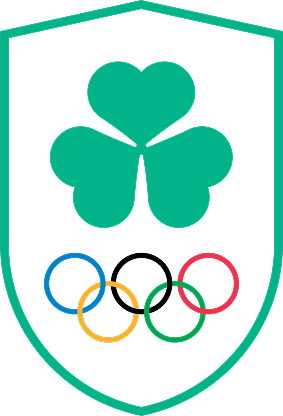National Federation
Basketball Ireland
National Basketball Arena,
Tymon Park,
Dublin 24.
Tel: (+353 1) 459 0211
Email: [email protected]
Web: www.basketballireland.ie
Olympic History
After a trial appearance as a display sport in the 1904 Summer Games in St Louis, USA, basketball made its official Olympic debut in the 1936 Summer Games in Berlin, Germany. To mark the occasion, James Naismith threw the first ball of the first game of the tournament.
A women’s tournament was introduced for the 1976 Summer Games in Montreal, Canada, while professional players were finally allowed to represent their country in the 1992 Summer Games in Barcelona, Spain. A US ‘Dream Team’ included world-famous players Michael Jordan, Magic Johnson and Larry Bird and swept the board to win the gold medal without being beaten.
Despite not being allowed to use professional players, the US men’s team has dominated the medal table of basketball over the years, winning 12 of the 16 gold medals awarded in the event’s Olympic history.
Technical Details
The court
An Olympic basketball court is a hard, flat rectangular wooden surface measuring 15 metres wide and 28m long with elevated baskets at either end. On the floor are several key markings. The three-point line is a semi-circle of radius 6.25m around the basket. The other crucial mark is the penalty line, which is 5.8m straight from the basket at the top of a triangular zone, known as ‘the key’.
The baskets
The baskets are elevated 3.05m high over the court, 1.2m in from the end of the court. The hoop of the basket is 45 centimetres in diameter, below which there is a net to contain the ball after points are scored. The hoop is mounted on a backboard that measures 1.8m wide and 1.05m high.
Players
Although a basketball match looks chaotic, players occupy key strategic positions.
The centre is the most forward player, and is there to defend the basket or pick up rebounds when an attacking player misses a shot. The forward and power forward are the main points scorers, while the playmaker is a smaller, quicker player who helps build an attack. The guard is the main defensive position and helps the team build up counter-attacks or takes long shots if required.
Rules
In Olympic competition, 12 teams are allowed to represent their country in each of the men’s and women’s tournament after qualifying for the Games. They play in two groups of six teams. After every team in a group plays each other, the top four go through to quarterfinals and semi-finals, with the two semi-final winners facing off for gold and silver and the two semi-final losers fighting for bronze.
Scoring points
There are three main ways of scoring points. A player scoring inside the three-point line scores two points, but if he scores outside the line, he picks up three points. In the case of fouls and penalties, players throw the ball from a specified spot straight in front of the basket, and only pick up one point.
Referees
Two referees patrol the sides of the court to monitor play, while a scorekeeper records and fouls and the timekeeper keeps track of stoppages, time-outs and the re-setting of the 24-second ‘shot clock’.
Dribbling
Basketball players aren’t allowed to hold the ball or use two hands while running, and must ‘dribble’ it by batting it from one hand to the floor and back again. If they hold the ball for more than two stops while moving, it is called ‘travelling’, and control of play is awarded to the opposing team.
Shooting
Shots can be made by either throwing the ball from a distance in a high arc into the hoop, or getting under the basket and jumping up with the ball to spectacularly ‘slam dunk’ it down into the hoop.
Attacking
Attacking players have five seconds to dribble, shoot or pass the ball. Their team has eight seconds to get the ball into the opposing half and 24 seconds to make a shot at the basket. If not, possession passes to the other side. Players only have three seconds in the ‘key’ zone directly below the basket. Once the ball is over the halfway line, they are limited to play in that half, and can’t go back to their own half. Attacking teams can use players as shields, or ‘screens’ to block defenders and allow other attacking players to maintain possession of the ball, but they aren’t allowed to push defenders. If they do, it’s a personal foul.
Defending
The team not in possession of the ball has to prevent the attacking team from scoring points and ultimately gain control of the ball themselves. By blocking or intercepting a throw from one player to another, they can pick up the ball and go on the attack. A missed shot, or rebound, also allows the teams to fight over control of the ball. There are two main types of defence strategy – zone defence, in which defenders focus on specific areas of the court, or man-to-man defence, in which each defender sticks to an attacker.
Timeouts
A team’s coach is allowed to ask for a 10-second timeout to give advice to his players or make changes. They are allowed to make one time-out in each of the first three quarters, two in the final quarter and one five-second time-out in each period of overtime.
Free throws
If a shooting player is fouled, he gets a free throw from the penalty spot. Players from both teams can battle for the rebound if he misses. If a player makes five personal fouls, he is ejected from the game, and when a team commits four fouls in the same quarter, two free throws are awarded for each successive foul.
